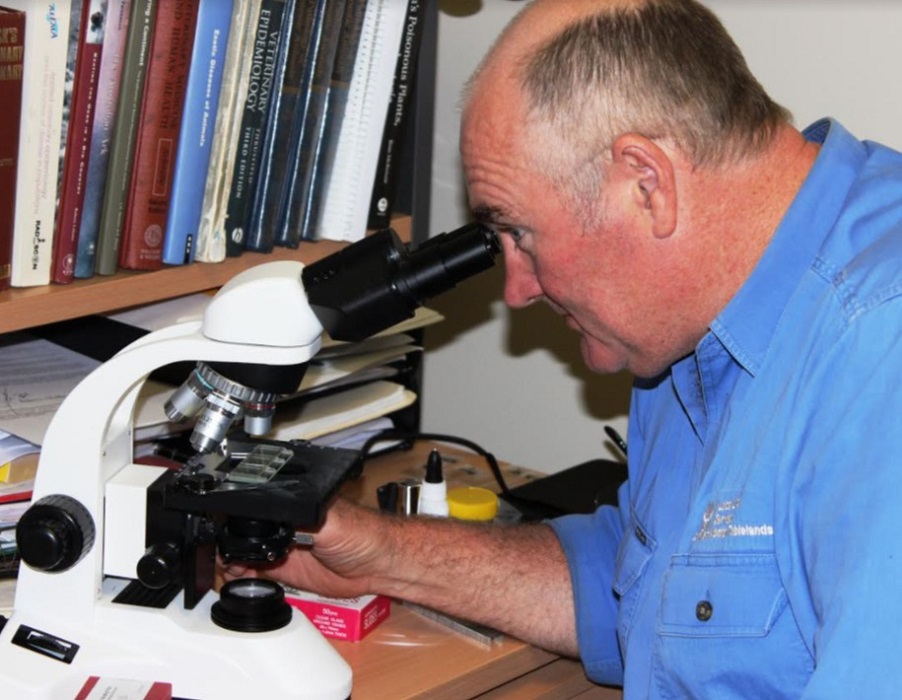
Northern Tablelands Local Land Services district veterinarian Andrew Biddle.
SHEEP on some New South Wales northern tablelands properties have been killed by barber’s pole worm infestations only two weeks after drenching, prompting a call for increased flock monitoring.
Northern Tablelands Local Land Services district veterinarian Andrew Biddle said recent rain and warm weather have provided ideal conditions for barber’s pole worm.
“Female barber’s pole worms lay up to 10,000 eggs per day and larvae on pasture have been building up all summer.
“Over the past couple of weeks, a rapid population explosion has occurred,” he said.
Barber’s pole worm is a potentially harmful roundworm parasite of sheep that suck blood from the lining of the stomach, causing anaemia. Often the sheep go from looking fat and healthy to dead very quickly with few symptoms.
Dr Biddle said LLS district vets have investigated several flocks where unexpected deaths of sheep were caused by barber’s pole worm.
“Young or old, skinny or prime, all sheep are susceptible.
“A particular concern is that, in a number of cases, the sheep were only two weeks post drenching,” he said.
“Drench resistance or ineffective drenches just make the problem worse.”
Dr Biddle urged producers to remember the principles of integrated worm management and follow their Farm Biosecurity Plan.
“If you are buying sheep, when you get them home hold them in the yards on feed and water and give them an effective drench.
“Don’t introduce someone else’s drench resistant flock to your flock,” he said.
“Seek advice on the best quarantine drench on your property.
“It may require several drenches to do the job properly.”
Dr Biddle said producers need to lookout for weak sheep with pale eyelids and gums.
“Sheep do not scour with barber’s pole worm as they do with other worm burdens – often the first sign is sheep dying.
“It takes about 21 days for the lifecycle of the worm, so about 3-6 weeks after the rain event is when we expect to see clinical signs in sheep.”
Dr Biddle said a worm test will tell producers what is really going on in their flock.
“If you wait until you see clinically impacted sheep, you have lost production and are likely to see deaths.
“Please do not reach straight for the drench gun – do a worm test first – you can pick up a worm test kit from your Local Land Services office, collect some sheep poo and send it to the lab,” he said.
“In a few days, you’ll know if your sheep are wormy enough to need a drench. Use an effective drench.
“If you have unexpected deaths in sheep it may not be worms.”
Producers are urged to contact their Local Land Services District Vet on 1300 795 299 or local veterinary practice for assistance if unexpected deaths occur.

A particular concern is that, in a number of cases, the sheep were only two weeks post drenching,” he said.
“Drench resistance or ineffective drenches just make the problem worse.”
There is always Barbervax – a vaccine against Barber’s pole worm. It doesn’t suffer from drench resistance.